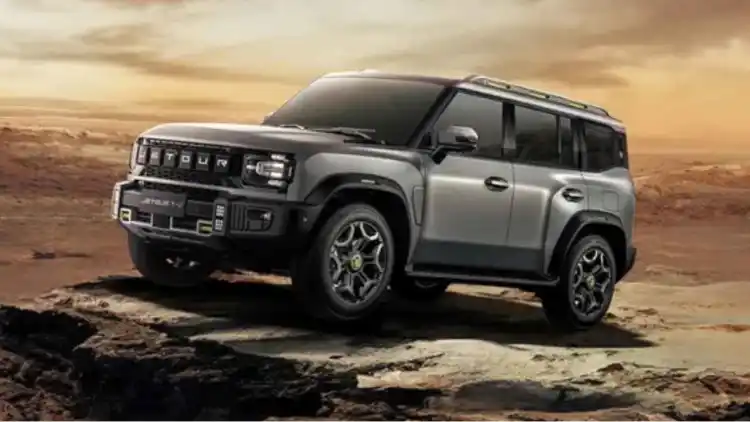- Rising Market Share of Chinese Cars in Europe
- BYD and the Leaders of the Chinese Automotive Surge
- Performance of European and Western Brands Amid Chinese Competition
- European EV Market Sees Record Growth
- Design and Technology Trends in Chinese Cars
- Impact of the Chinese Wave on the Global Auto Industry
- Challenges Facing Chinese Manufacturers
- Future Outlook for the European Market
In an unprecedented phenomenon, Chinese automotive brands have achieved remarkable growth in their sales across Europe during the first half of 2025, surpassing many well-established European names. In some months, they even outsold Mercedes—one of Europe’s most historic and renowned automakers—within a market that has long been the stronghold of European car manufacturing.
Rising Market Share of Chinese Cars in Europe
Chinese brands recorded a 91% increase in new car registrations during the first half of the year, selling approximately 347,100 vehicles. This boosted their market share significantly to 5.1% of the total European car market, very close to Mercedes’ 5.2% share. In June alone, Chinese brands outpaced Mercedes, as well as Ford, which stood at 3.8%.
These figures reveal intense competition and significant growth for Chinese manufacturers amidst a market undergoing fundamental shifts, particularly toward electric vehicles (EVs), innovation, and environmental trends.
BYD and the Leaders of the Chinese Automotive Surge
BYD stands out as the spearhead of this Chinese breakthrough in Europe, achieving a 133% increase in electric vehicle sales in June and a 143% rise in the first half of 2025, with 41,300 electric vehicles sold. This placed BYD 12th among the top EV brands registered in Europe.
Additionally, plug-in hybrid electric vehicles (PHEVs) from BYD, Jaecoo, and Omoda gained substantial popularity in the European market. The BYD Seal U competed closely with the Volkswagen Tiguan to be the best-selling plug-in hybrid in June.
Other Chinese brands like Xpeng and Leapmotor also showed notable growth, reflecting the product diversity and advanced technology offered at competitive prices.
Performance of European and Western Brands Amid Chinese Competition
Despite the rapid rise of Chinese brands, European giants such as Volkswagen (+3%), Renault (+6%), BMW (+4%), and Ford (+6%) maintained modest growth in the first half of 2025. However, some leaders notably lost ground: Tesla saw a 33% drop in sales during the same period, with its previously best-selling Model Y falling to 68,800 units, negatively impacting its ranking in the top ten European models.
Stellantis, owner of popular European marques like Peugeot and Nissan, experienced a 9% sales decline, signaling difficulties faced by traditional Western brands in maintaining their market shares in the face of mounting new competition.
European EV Market Sees Record Growth
The first half of 2025 marked a new era for the European electric car market, exceeding one million EV registrations—an unprecedented milestone—with total EV sales rising 25% year-on-year to 1.2 million vehicles.
This boom is largely supported by the rapid expansion of Chinese brands, which heavily invested in battery technology, electric powertrains, digital updates, and safety features, making them formidable and favored contenders among European consumers.
Design and Technology Trends in Chinese Cars
Chinese cars stand out not only in quantity but also in rising build quality, stylish design, and advanced technology. Features such as enhanced driver-assistance systems, sophisticated color displays, and intelligent controls appeal to consumers seeking an up-to-date and economical driving experience.
Chinese automakers offer a wide variety of EVs, crossovers, and plug-in hybrid models finely tuned to meet Europe’s diverse needs, focusing on improving driving range, affordability, and compliance with stringent environmental standards.
Impact of the Chinese Wave on the Global Auto Industry
These data represent a landmark shift signaling the forceful entry of a new competitor into Western European markets, historically dominated by German, French, and British manufacturers. This forces Western brands to reevaluate strategies concerning technology development, pricing, and marketing.
The new competition encourages European automakers to accelerate EV projects, enhance user experiences, reduce costs, and expand production and distribution networks to stay competitive.
Challenges Facing Chinese Manufacturers
Despite their achievements, Chinese brands face several challenges in Europe: building consumer trust, complying with strict European safety and emission regulations, and confronting potential tariffs and trade barriers amid ongoing political tensions.
Moreover, they must continue to improve after-sales service, component quality, and develop robust EV charging infrastructure to secure long-term customer satisfaction.
Future Outlook for the European Market
As electric vehicle sales continue to expand, competition between Chinese and European brands remains fierce, and market balance is likely to shift further in coming years. Chinese firms are making efforts to attract new consumer segments by collaborating with local companies and establishing manufacturing facilities in Europe to enhance service speed and competitiveness.
Innovation in smart mobility, connectivity, and subscription services will increasingly influence consumer purchasing decisions in the near future.
Chinese automotive companies have firmly established their presence in the European market, achieving exceptional sales growth and expanding market share while surpassing traditional and long-established European brands.
These developments raise important questions about the future of the automotive industry in Europe and worldwide, urging established manufacturers to innovate and improve to remain attractive to modern consumers seeking a balance of technology, quality, and affordability.
With growing demand for electric and hybrid vehicles, the industry’s future landscape is set to see an intensified presence from Chinese brands, who have closed the gap swiftly to become major global players.











